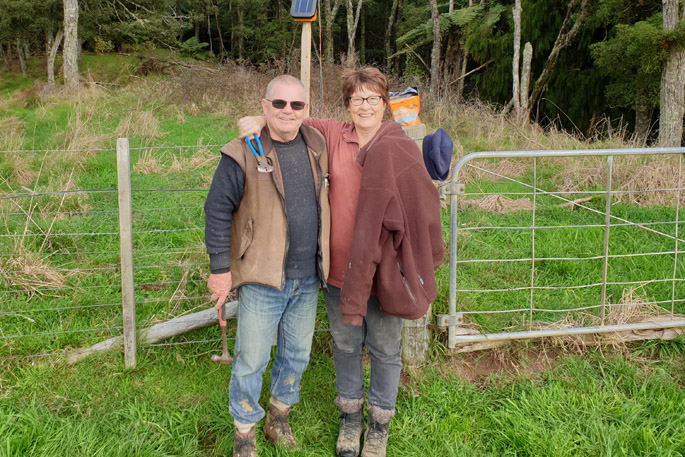Waikato Regional Council is nearing the end of a lengthy process to engage with the community about proposed measures to improve water quality in the Waikato and Waipa rivers.
The proposal for change to the Healthy Rivers: Plan for Change has attracted more than 1000 submissions, and commissioners expected to hear around 450 oral submissions before hearings finished mid-September.
Beef farmer Edgar Henson, who owns a 207ha property at Glen Murray, is among many individuals and organisations to make submissions on the council’s planned changes.
Edgar, like many other submitters, is supportive of the plan’s objective to improve water quality, but is opposed to key aspects within the plan on the basis that proposed measures will be inefficient, ineffective or difficult to administer.
Key concerns
The need for modified objectives, policies, rules and methods for the management of nitrogen were among Edgar’s key concerns. He opposed the introduction of a nitrogen reference point and the use of Overseer as a means of regulating nitrogen management.
In its submission, Beef+Lamb New Zealand also expressed broad support for the vision and strategy for the Healthy Rivers Plan for Change, but suggested a number of fundamental changes to the plan to more effectively deliver desired outcomes.
B+LNZ co-funded development of Edgar’s Farm Environment Plan as part of its programme to increase adoption and uptake of FEPs, says B+LNZ’s North Island extension manager Maria Shanks.
“The idea is that farmer leaders complete a Land Environment Plan Level 3 on their property and hold a field day so we can promote the benefits to other farmers. Ultimately, we are supporting farmers to take further actions on-farm to enhance nutrient and erosion management plans, which will have a long-term beneficial impact on water quality in the Waikato and Waipa catchments.”
Under Waikato Regional Council’s proposed rule changes, FEPs will become compulsory and Edgar was the first to present a plan to the commission.
He told commissioners: “You can’t dump rules on people. It just won’t work. A holistic approach that considers the environment, economics and other issues is best and will deliver good results”.
Edgar advocated for what he considers a more simple, fairer system than that proposed in the plan.
“I suggested the addition of an easy-to-read section within the FEP that includes four critical measures: stocking rate per hectare, cattle per hectare, phosphate kilograms per hectare, and nitrate kilograms per hectare.
Simple model
“How each farm’s numbers stack up against the council’s standards would determine whether a property is compliant or non-compliant, and updates to those four numbers would be reported biannually. Council would also take a random sample of properties and get them assessed independently to validate results. “Keeping the model simple is very important,” says Edgar.
The 207ha Kaike Farm property he owns with wife Nona has been under careful environmental management for many years.
Edgar did the groundwork for the FEP himself before turning over development to specialist Leanna Birch.
Edgar has been measuring water quality on his property for three years, taking phosphate and nitrogen measurements at the boundary as the Taringapeka Stream enters the property; and again at the stream exit point, which is just good practice he reckons.
Around two-thirds of the property is steep and classified with a Land Use Capability of 5 or 6 and the rest of the property is flat, productive pastoral land. The farm also includes 25ha of bush subject to three QEII covenants.
The pastoral land – about one-third of the property – is used for hay and grazing, and LUC 5-6 land is very lightly stocked, says Leanna.
Land care group
Planting poplars has been underway for a long time and works to protect the steepest parts of the property from erosion, says Leanna.
About 24 local landowners, including Edgar, formed the Upper Maire Land Care Society to collectively manage the land along the Upper Maire Valley that runs through their properties. The society provides a framework for making grant applications and working collectively to improve environmental outcomes for that land.
Soil testing is an important part of the Kaike Farm management plan, and influences the annual fertiliser application on the hill country parts of the property.
“Edgar uses the Kinsey-Albrecht system, which identifies parameters for potassium, sodium, calcium and magnesium. Fertiliser applications are then tailored to bring the soil back into balance,” says Leanna.
“When the soil biology is right, the plant – whatever it is – will acquire all the necessary nutrients in the proper amounts,” says Leanna.
“What’s good about Edgar’s FEP is that it doesn’t just cover the basics. It goes beyond what is mandatory and provides environmental tools and solutions that will make a difference not only to the environment, but also to business outcomes – and that’s how it should be,” says Leanna.
The Waikato Regional Council has until April 30, 2020, to make a plan change decision. According to WRC, its PC1 work schedule will continue despite the Government’s newly-announced freshwater proposals – due to them only being proposals at this stage. Edgar and his fellow farmers are hoping for a decision that delivers good outcomes for both the environment and landowners.



0 Comments
Leave a Comment